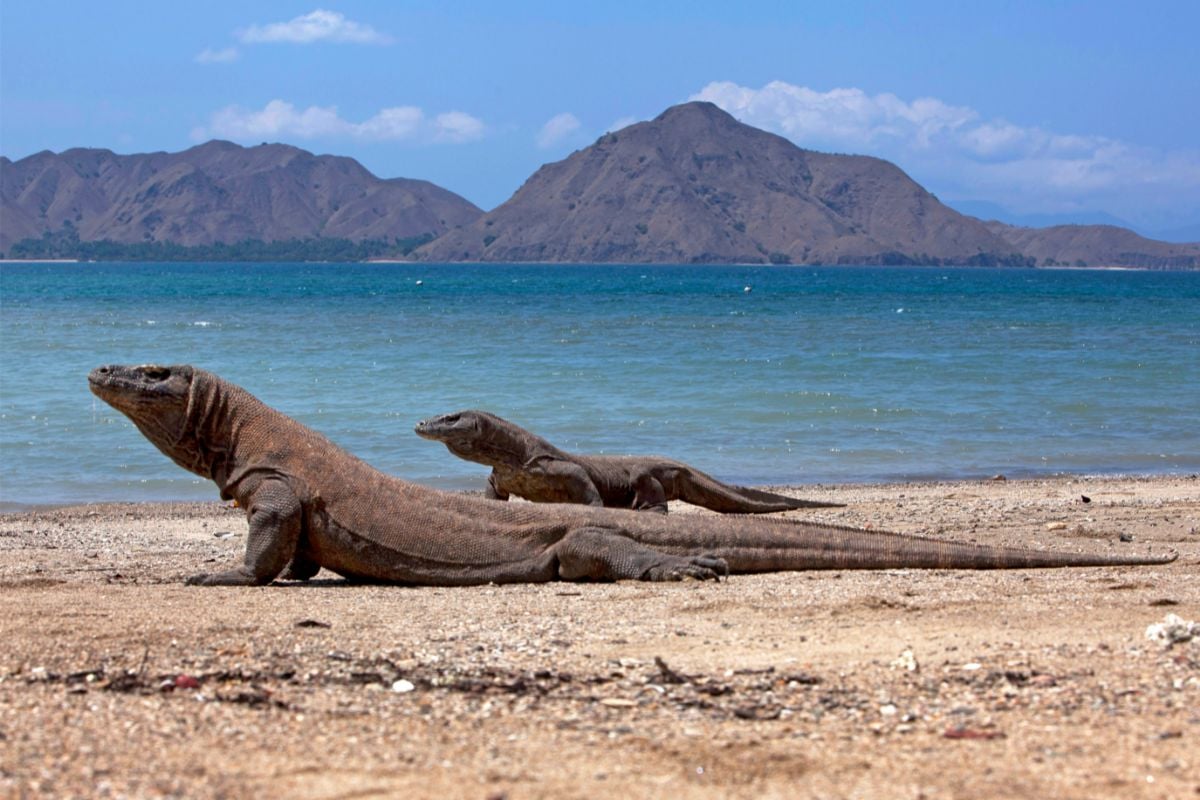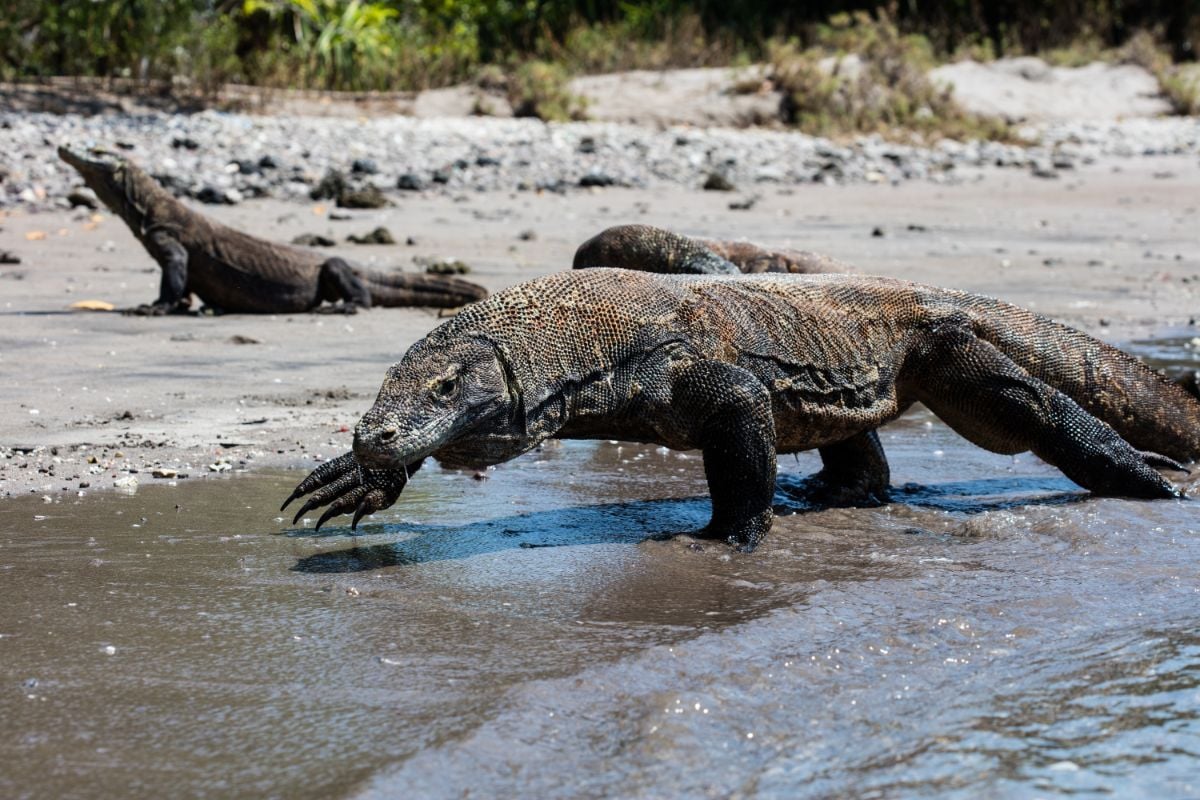Do you ever find yourself wondering what the biggest lizard in the world is? If so, then you’re not alone! We all have an innate curiosity that drives us to learn more about our planet and its inhabitants.
From Komodo dragons to geckos, lizards come in all shapes and sizes – but which one reigns supreme as the largest of them all?

The winner is … the Komodo dragon! Let’s learn more about this magnificent creature.
Where Does The Komodo Dragon Live?
The Komodo dragon is the largest species of lizard in the world. They are native to a few small islands in Indonesia, including Rintja, Flores and Padar.
The terrain on these islands consists mainly of savanna-style grasslands and dry tropical forests, making it an ideal habitat for this reptile.
Komodo dragons have also been known to inhabit mangrove swamps and marshes, as well as rocky hillsides and open woodlands.
They are strong swimmers and can be found up to 5 miles offshore from their island homes. In fact, they often use the ocean currents to travel between islands when searching for food or new breeding grounds.
Given their size and strength, they are able to survive in some of the harshest habitats; however, they prefer areas with plenty of vegetation where prey is abundant.
How Much Does A Komodo Dragon Weigh?
Komodo Dragons can weigh up to 200 lbs. They have muscular legs that help them move quickly over land, as well as webbed feet which enable them to swim.
The average Komodo Dragon is between 6-10 feet long from head to tail tip.
The weight of an adult Komodo Dragon depends on its sex and size. Male dragons tend to be slightly heavier than females, with weights ranging from 174-200 lbs.
Female dragons usually range anywhere between 150-161 lbs. In addition, younger dragon’s typically weigh less than adults due to their smaller sizes.
Body Temperature
Komodo Dragons have a unique way of regulating their body temperature – by basking in sunlight for several hours during the day to warm themselves up.
This helps them conserve energy when hunting prey or searching for food sources such as carrion (dead animals). As a result, these lizards can survive in some of the harshest climates and environments on Earth!
Are Komodo Dragons Endangered?
Komodo dragons live exclusively on five small islands in Indonesia, and have been listed as a vulnerable species since 2017 by the International Union for Conservation of Nature (IUCN).
Unfortunately, there are fewer than 3,500 Komodos left in the wild today.
The threats facing Komodo Dragons come from a variety of sources. Human activities like poaching, habitat destruction, pollution, and climate change all create pressures that impact their populations.
Poaching is especially problematic because it is difficult to monitor due to the remote location of many of these islands.
Additionally, invasive species such as feral cats can prey upon hatchlings or eggs before they even reach adulthood.
Komodo dragon conservation efforts focus on protecting them through law enforcement and education about their vulnerability.
The IUCN has identified several areas where protection needs to be improved including better anti-poaching laws and enforcement; more monitoring systems; greater public awareness; increased research into their biology; and restoration of habitats damaged by human activity.
All of these measures will help ensure that future generations will still be able to experience these amazing creatures first hand.

Can A Komodo Dragon Swim?
Generally speaking, these lizards are excellent swimmers and have been known to cross rivers and even take part in long-distance migrations across shallow waters.
They rely on their strong front limbs which act like paddles, allowing them to propel themselves through the water with ease.
What makes this ability particularly impressive is that a Komodo Dragon has all four feet unwebbed!
This means that unlike most lizards, who use webbing between their toes as an aid while swimming, the Komodo Dragon relies solely on its strength and agility.
How Often Do Komodo Dragons Eat?
As apex predators with no true natural enemies, these lizards are known for being incredibly powerful hunters.
They will feed on just about anything they can catch – from insects to deer or even wild boar. However, due to their slow metabolism they typically only eat about 12 times a year.
Komodo Dragons have developed a unique system of digestion that helps them make the most out of what little food they consume.
Their stomachs contain high levels of acidity which break down tough meat quickly and efficiently allowing them to survive off smaller meals.
Additionally, Komodo Dragons have adapted an interesting feeding technique in which they bite their prey then wait patiently until it dies before consuming it entirely – this allows them to conserve energy while still getting a full meal.
All in all, although Komodo Dragons aren’t constantly hunting like some other animals might be, when they do seek out prey they are quick and effective at finding it.
This enables them to sustain themselves with minimal effort over long periods of time without needing frequent meals.
Are Komodo Dragons Poisonous?
The saliva of a Komodo dragon contains several toxins, including an anticoagulant that prevents blood from clotting.
This means that once bitten by a Komodo dragon, its prey will bleed out quickly and die within minutes due to loss of blood.
Komodo dragons have powerful jaws and sharp teeth which allow them to deliver more venom into their victims than any other known snake or lizard species.
They don’t often attack humans but it’s best to be cautious if you ever come across one on your travels through Indonesia.
Conclusion
The Komodo Dragon is an incredible species with many unique characteristics worth admiring.
While its population numbers may be low now, hopefully conservation efforts will help protect these majestic creatures from extinction so future generations can appreciate them too!
- Can Leopard Geckos Eat Silkworms? - March 11, 2024
- Do Leopard Geckos Climb? - March 4, 2024
- Do Leopard Geckos Bask? The Answer Will Surprise You - February 21, 2024
